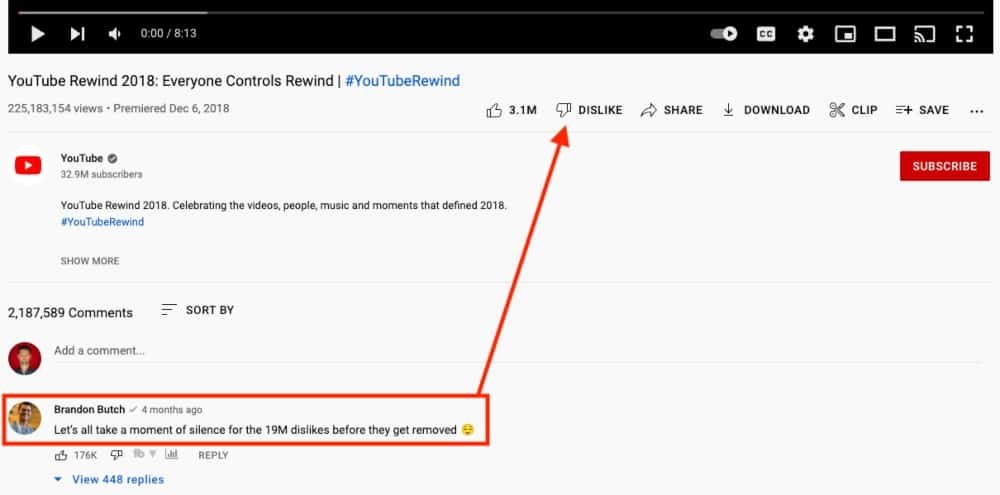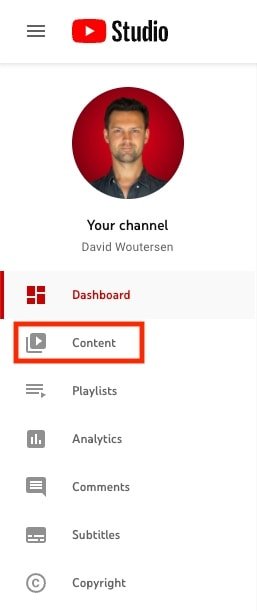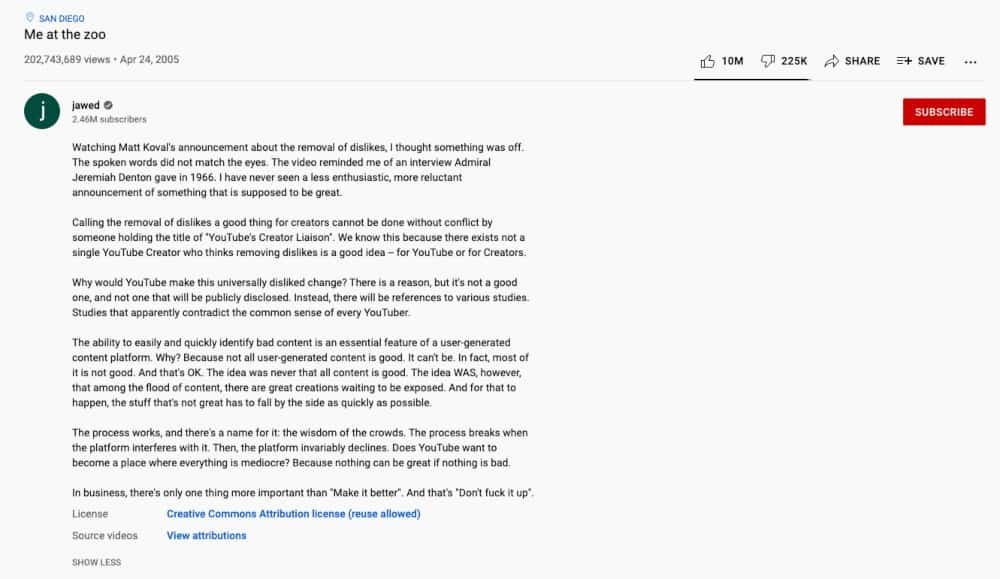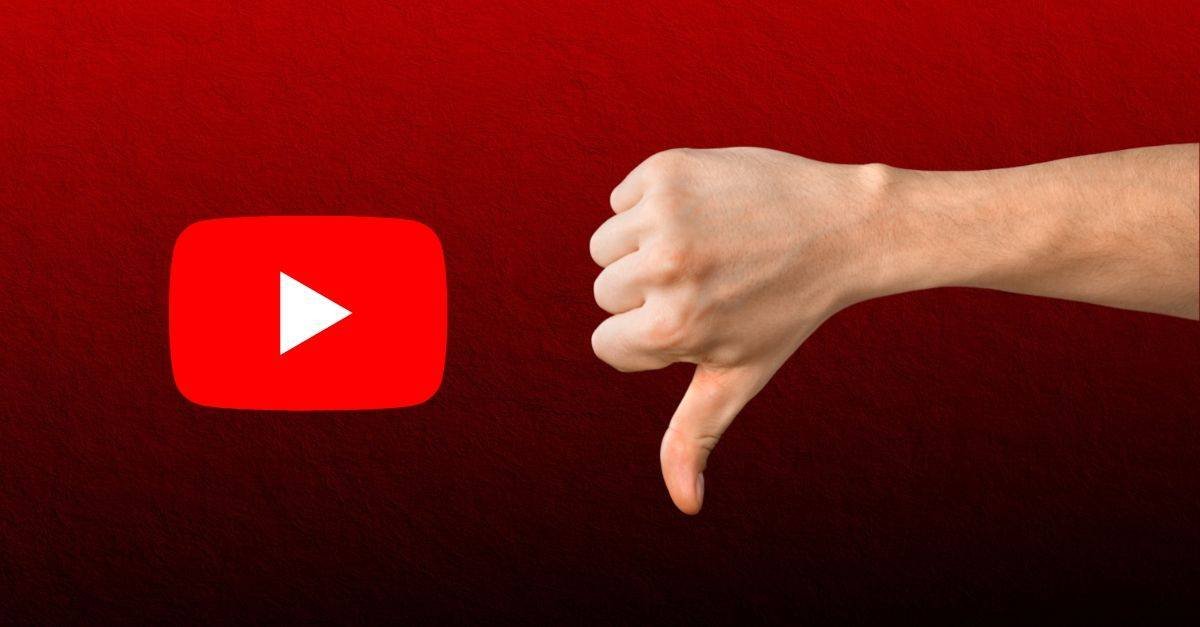YouTube has done away with the dislike count on videos, removing the ability for users to see how many dislikes a video has received.
This change has caused an uproar among many of YouTube’s creators and users, who feel that the removal of dislikes makes it harder to express negative opinions and judge the quality of videos at a glance.
In this article, we’re going to look at why did YouTube remove dislikes, and if it was the right move.
- Has YouTube removed the dislike button?
- Why did YouTube remove dislikes?
- Pros of removing the dislike count
- Cons of removing the dislike count
- Can you see the dislikes on YouTube comments?
- Will the dislike button count be coming back?
- How to see dislikes on YouTube
- What has been said about YouTube removing the dislikes
- Final thoughts on why YouTube removed dislike counts
Has YouTube removed the dislike button?
The dislike button has not been removed, but the dislike count that shows how many users have disliked a particular video has been removed.
The dislike button is still available on YouTube videos, but only the channel managers of the YouTube channel can see the number of dislikes and the like to dislike ratio of a particular video.

Why did YouTube remove dislikes?
YouTube removed the dislike count on videos as they believe it will help protect creators from harassment and reduce “dislike attacks”, which are when groups of individuals drive up the number of dislikes on a video.
According to YouTube CEO, Susan Wojcicki, these attacks can have many reasons, including some that have nothing to do with the video.
YouTube said this: “Earlier this year, we experimented with the dislike button to see whether or not changes could help better protect our creators from harassment, and reduce dislike attacks — where people work to drive up the number of dislikes on a creator’s videos.
As part of this experiment, viewers could still see and use the dislike button. But because the count was not visible to them, we found that they were less likely to target a video’s dislike button to drive up the count. In short, our experiment data showed a reduction in dislike attacking behavior.”
That is the official reasoning behind the removal of the dislike count, however, many creators and commentators are of the belief that the removal was done to protect corporate businesses, companies that bankroll the platform through their ad spend, rather than creators.
There are many examples of “dislike attacks” going towards large corporate entities as opposed to small creators, and often with good reason. Corporations with bad polluting habits, trailers for movies that do not meet expectations, businesses with less than transparent operating procedures, and even YouTube’s disconnected rewind videos themselves, all of which have valid reasons for receiving the dislike numbers they’ve generated.

This is not to say that some creators will not benefit from this, but the platform will become less transparent, and these opaque areas are where scammers and spammers tend to exploit.
Pros of removing the dislike count
Fewer dislike attacks
Some YouTube creators are in support of the move as it reduces the harassment they receive. Dislike attacks can be very discouraging for creators, and some have even stopped making videos because of it.
Removing the dislike count takes away the power that these trolls have over content creators.
Mental well-being for creators
Another reason for creators supporting the decision is their mental well-being. Social media can be a very negative place, and constantly seeing dislikes on your videos can be very disheartening.
Some YouTubers have even quit the platform because of the constant negativity they receive. Removing the dislike count might make YouTube a more positive place for creators.
A caveat here though is that creators can still see how many dislikes their videos receive. So, they can still suffer from the negativity, not to mention the negative comments that trolls tend to make.
Cons of removing the dislike count
Difficult to gauge video quality
This has been one of the biggest criticisms of the removal of the dislike count. For tutorials, how-to, craft, and problem-solving videos, the dislike count was a reliable way of judging whether a video actually delivered on its promise.
Without a dislike count, clickbait is a lot easier to get away with, as a viewer needs to watch more of the video in order to see whether it is what they are looking for or not.
Spam and scammers
The lack of a dislike count also helps scammers and spammers as they can control how well a video is perceived, leading to more susceptible viewers believing scams promoted on YouTube.
The creator now has full control over the like-to-dislike ratio visible on a video, and they have full control over what comments are visible. If whistleblowers leave a comment, the scammer can simply remove it and use spam services to leave hundreds of falsely positive comments.
Less transparency
This is one of the most concerning aspects for many people. The dislike count provided some level of transparency to how viewers felt about a video, and without it, YouTube becomes more opaque.
YouTube’s “trending” section is already one of the least transparent places, with some of the largest creators having appeared far less frequently than mainstream media operated by large corporations.
This may also lead to a rise in fake comments as people attempt to game the system, something that is already a problem on YouTube.
Can you see the dislikes on YouTube comments?
With the dislike count of YouTube videos now gone, what about the dislike counts of comments? Will there at least be some form of feedback that users can gauge through that?
Well no, dislikes on YouTube comments are not visible, and unlike video dislikes, this is not something that anyone can see, not even the comment creator.
Will the dislike button count be coming back?
Probably not. YouTube has been testing the removal of this feature for many months (if not years).
They have already weathered the majority of the storm and in early 2022, the YouTube CEO reasserted the reasoning behind removing the button and tried to address some of the concerns users brought up (albeit not very convincingly).
All of this points to YouTube sticking to their guns for the foreseeable future.
Unless something drastic happens where the corporations that fund YouTube through their massive advertiser spending decide that they really want a dislike button count again for whatever reason (highly unlikely), the dislike count is gone, and it’s gone for good.
How to see dislikes on YouTube
While the dislike button count is gone, dislikes themselves are not gone. Video creators can see the actual number of dislikes a video has in the backend.
There are also browser extensions that claim to show the dislike count of a video, but these tend to be inaccurate estimations based on previous behavior before the dislike count was removed.
The only accurate way to see the dislikes of a video is by looking in the YouTube studio.
If you want to see the number of dislikes your video received, you can do so by following these steps:
Open YouTube Studio and log into your account.
Select “Content” from the menu on the left.

Scroll to find the video you want, and then in the column on the right, hover over the likes vs dislikes percentage to see the number of likes and dislikes a specific video has received.

What has been said about YouTube removing the dislikes
With YouTube removing the dislike count on videos, there has been some follow-up by people in influential positions.
This is what they had to say on the matter.
YouTube CEO Susan Wojcicki
We heard from many of you about the removal of public dislike counts on YouTube, and I know this decision was controversial. Some of you mentioned dislikes helped you decide what videos to watch.
However, people dislike videos for many reasons, including some that have nothing to do with the video, which means it’s not always an accurate way to select videos to watch. That’s why dislikes were never shown on the home page, search results, or Up Next screens where users were most likely to choose a video.
We also saw the dislike count harming parts of our ecosystem through dislike attacks as people actively worked to drive up the number of dislikes on a creator’s videos. These attacks often targeted smaller creators and those just getting started. We want every creator to feel they can express themselves without harassment.
So we experimented with removing the dislike count across millions of videos over many months. Every way we looked at it, we did not see a meaningful difference in viewership, regardless of whether or not there was a public dislike count. And importantly, it reduced dislike attacks.
Letter From Susan
YouTube Co-Founder Jawed Karim
From an update to his “Me at the zoo” video:

Watching Matt Koval’s announcement about the removal of dislikes, I thought something was off.
The spoken words did not match the eyes. The video reminded me of an interview Admiral Jeremiah Denton gave in 1966. I have never seen a less enthusiastic, more reluctant announcement of something that is supposed to be great.
Calling the removal of dislikes a good thing for creators cannot be done without conflict by someone holding the title of “YouTube’s Creator Liaison”. We know this because there exists not a single YouTube Creator who thinks removing dislikes is a good idea — for YouTube or for Creators.
Why would YouTube make this universally disliked change? There is a reason, but it’s not a good one, and not one that will be publicly disclosed. Instead, there will be references to various studies. Studies that apparently contradict the common sense of every YouTuber.
The ability to easily and quickly identify bad content is an essential feature of a user-generated content platform. Why? Because not all user-generated content is good. It can’t be. In fact, most of it is not good. And that’s OK. The idea was never that all content is good. The idea WAS, however, that among the flood of content, there are great creations waiting to be exposed. And for that to happen, the stuff that’s not great has to fall by the side as quickly as possible.
The process works, and there’s a name for it: the wisdom of the crowds. The process breaks when the platform interferes with it. Then, the platform invariably declines. Does YouTube want to become a place where everything is mediocre? Because nothing can be great if nothing is bad.
In business, there’s only one thing more important than “Make it better”. And that’s “Don’t fuck it up”.
YouTube Co-Founder Jawed Karim
Final thoughts on why YouTube removed dislike counts
It’s clear that there are a variety of opinions on YouTube’s decision to remove dislikes from public view.
Some feel that it was a necessary move to protect creators from harassment, while others believe that it will hinder the ability of users to find good content.
Only time will tell how this change will affect YouTube and its users in the long run.
Hopefully, this is only the start of YouTube implementing actual changes to reduce spam and scams on the platform. The removal of the dislike count alone won’t solve the rampant problems of trolls, scams, and garbage information.
